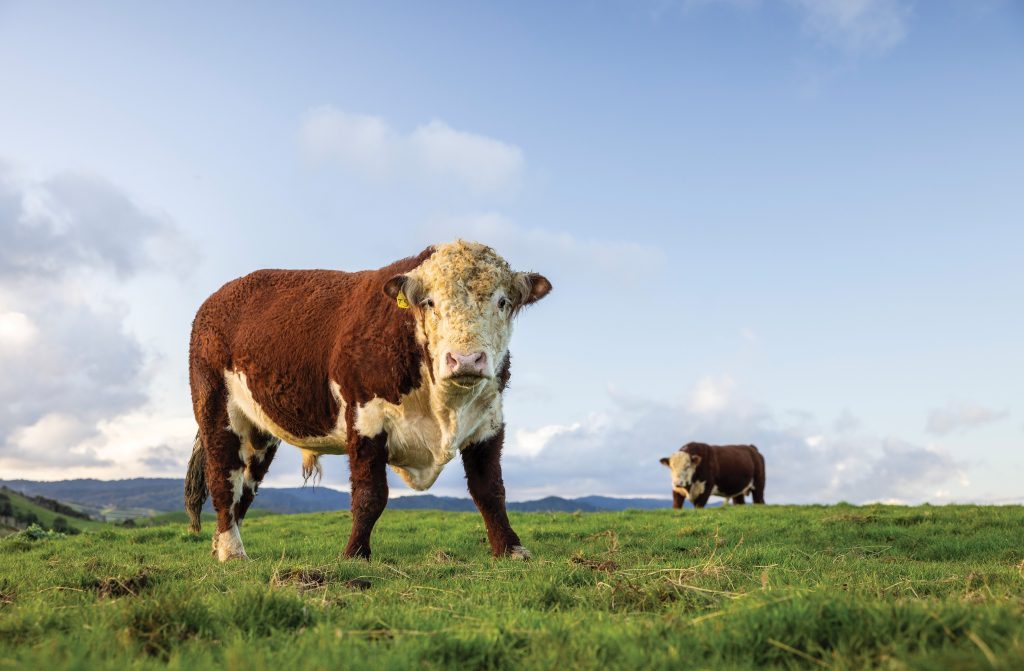Award winners at Waytemore
Rick and Shirley-Ann Mannering run an integrated sheep and beef farm and two dairy operations just south of Auckland and they’re making big strides to remove pests from their bush bordering the Hunua Ranges. By Glenys Christian.
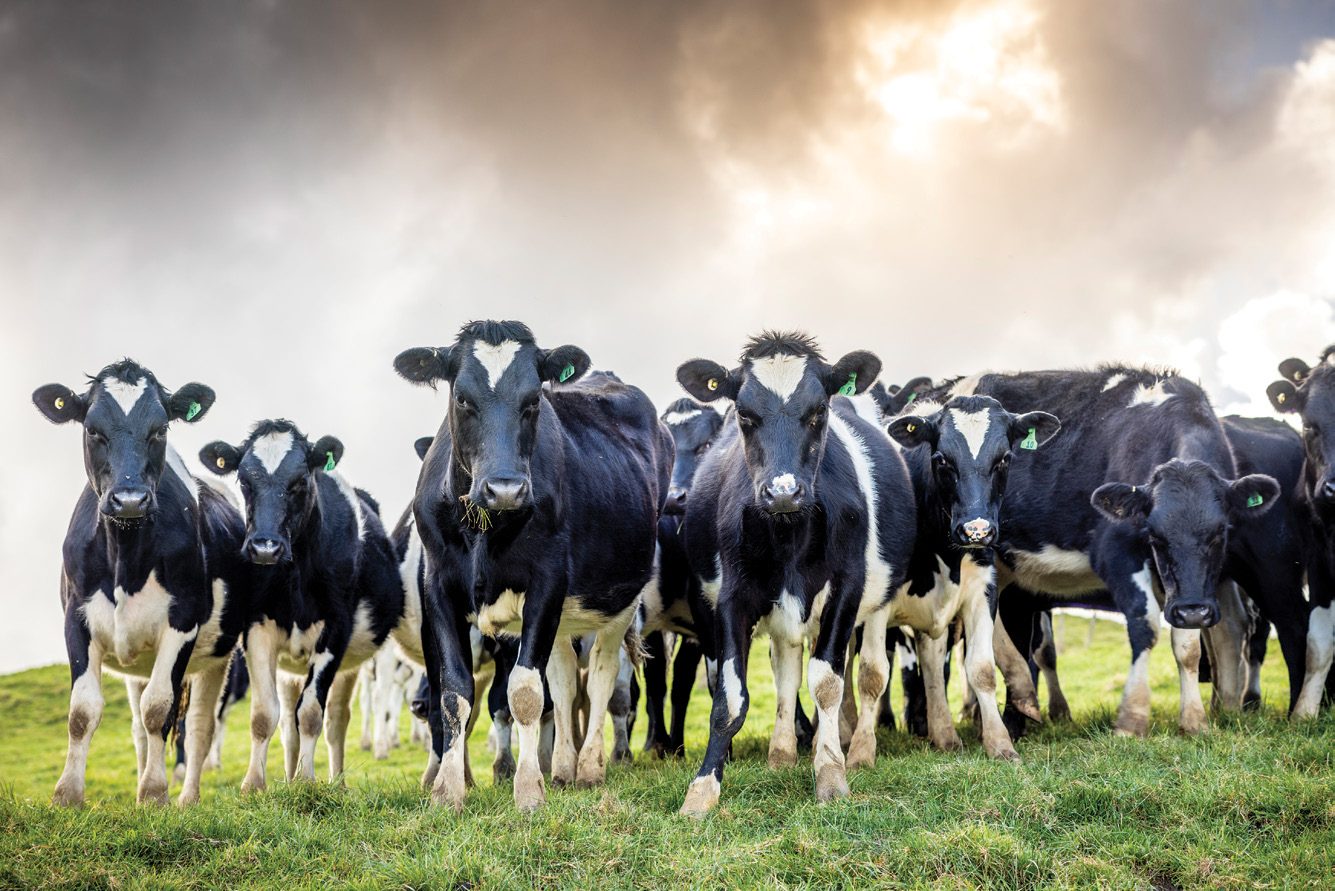
The Mannerings report on each entity individually, aiming for efficient and profitable performance, but decision-making is based on what will give the best result for Waytemore Farms as a whole.
They wanted to integrate the whole farming operation across the dairy and sheep and beef farms under one farm manager, so in a staged process they bought dairy herds and changed to contract milkers on the dairy farms.
They now run 860 Friesian cows and 360 replacements, with the three-year average milksolids (MS) production 274,846kg and the best achieved, 311,119kg MS. They’re milked through two herringbone dairies, once-a-day milking when required, due to factors such as cow condition, the season and production levels.
“We generally dry off in May,” Rick says. “But stock may be staggered with some drying off earlier, depending on conditions, and some that are not in-calf may be milked through longer.”
The Mannerings have also made significant changes in the way the sheep and beef farms work, with a move away from the previous trading model where weaners were bought in February and advantage taken of any opportunities to buy other stock at good prices. Now the dairy cows are effectively the breeding herds for the beef farm, providing all the 720 dairy beef stock to be raised.
The rising two-year-old dairy replacements are synchronised in September for AI with low birthweight Friesian semen in the first week of October. At an average weight of 263kg, about 52% take to AI, so this is followed up with proven low estimated breeding value birthweight and good calving ease yearling Hereford bulls from their long-term supplier, Mahuta Herefords at Glen Murray. The bulls go in with the heifers for 10 weeks, pregnancy testing takes place in February, then they’re returned to their respective herds on June 1 to calve. This starts anywhere between July 10 and 20, aiming for a condensed period with a mean calving date about August 16. The last cows to calve are between September 10 and 20.
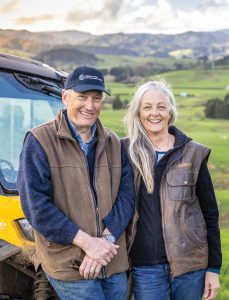
Shirley-Ann says they aim for a 20% replacement rate, with dairy heifer calves weaned at 110kg then transferred to the drystock farm at the end of November or early December.
“We want to grow out dairy replacement heifers to an optimum weight for mating so they return to each dairy farm as top condition, well-sized in-calf heifers.”
Under an animal health programme developed with their vet, dairy beef calves are brought to a rearing facility on the sheep and beef farm, weighed, NAIT scanned and given a multimin vaccine. Then they’re placed in dedicated plastic tunnel pens at 10 calves a pen. They’ll stay in that group in the same pen for their first month, being fed milk twice a day with Fibre Gain, a fibre-meal combination, for three weeks.
At 4–5 weeks old the calves go out into a paddock in mobs of 40 where there are free-standing shelters from bad weather. They still get the fibre meal and milk once a day. They will be weaned off milk at 8–10 weeks old, staying on the fibre meal until they’re fully feeding on grass.
Calf health and growth rates are monitored regularly with them being weighed and drenched every four weeks. Their weights are recorded in MINDA and they’re given leptospirosis and bovine viral diarrhoea vaccinations.
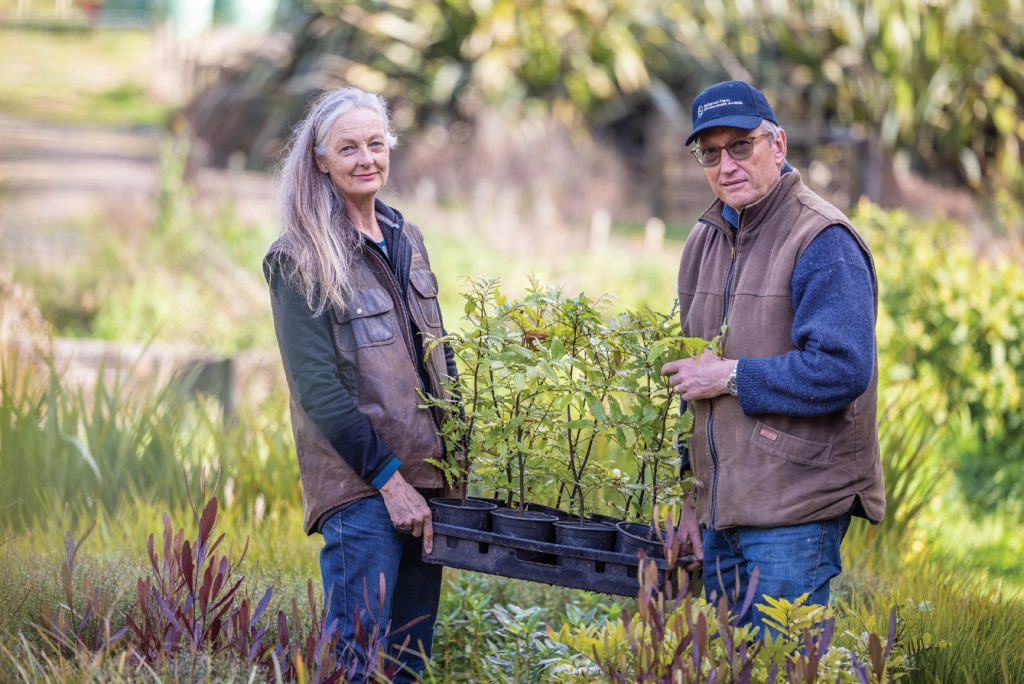
For their beef operation, Hereford- cross dairy calves and Friesian bull calves are picked up regularly on Mondays and Thursdays from the dairy farms. The top cut of about 60 Friesian bull calves are sold at weaning, usually in December at weights between 110 and 115kg. The remainder are carried through to the following spring and sold as yearlings. Hereford-cross steers and heifers are retained and go onto a beef-cattle rearing programme after weaning to be finished between two and two-and-a-half years old; average weights this year were 283kg carcase weight for the steers and 229kg for heifers. If there’s a feed pinch point then some stock may be sold as store cattle.
“This means they’re not going through the saleyards as calves so there’s no stock truck journeys until they go off farm for sale.
“We know their life histories with all the details, such as weighing and drenching dates and vet services they’ve received. So they’re happy and healthy stock until they’re finished.”
The yearling Hereford bulls that are brought in to cover selected mixed-age dairy cows are sold at about three years old.

Change of genetics
The Mannerings reduced sheep numbers to 2000 mixed-age ewes in 2016 and moved to Wairere Challenger rams to improve lambing percentage, increase weaning, growth and carcaseweights, and boost facial eczema tolerance after a couple of bad seasons. Rams usually go out from February 15 but their 500 replacement hoggets are not mated as there is usually no surplus feed to get to them to 40kg.
“Our aim is to produce a good two-tooth ewe that has lambed, rather than a hogget that’s been underfed and won’t grow out,” Rick says.
Lambs are finished to go off the farm in mobs from December through to May, but some may be sent to store depending on the season. The lambing percentage is improving every year with the three-year average 133% and a high of 142%. Pregnancy scanning is carried out in May and empty ewes culled.
Lambing starts in mid-July and the aim is to complete docking by the end of September. Lambs are weaned in early November. The Mannerings have been growing a summer crop of 14ha of Raphno to help during the usual expected dry period.
“We can only laugh about that now,” Shirley-Ann says. Rainfall, usually about 1700–1850mm a year, is already twice that this year.
The ewes are mostly grazed on their harder hill country “filling the voids” around other stock, as feed is prioritised for rising one- and two-year dairy heifers, dairy beef weaners and lambs.

Their animal health programme, developed with their vet, sees mixed-age ewes go undrenched, but lambs drenched with a short-acting drench as barber’s pole worm can be an issue. Their vet has carried out testing to make sure there are no drench resistance concerns. Stock are also monitored for facial eczema and are given a bolus. Pink eye has been a problem in the past and affected ewes culled.
Shearing takes place in May and November every year, mainly for animal health reasons, says Shirley-Ann, but they do have a contract for lambswool in the 28–31-micron range.
“That’s been worthwhile as our sheep’s wool usually has good colour.”
They used to bring in all maize silage, but last year they grew 10ha of maize for silage on each dairy farm and also bought some in. For pasture renewal they’ve used diploid Platform perennial ryegrass following the supplementary crops of chicory and maize.
Soil testing is carried out every three years on the sheep and beef farm and every two years on the dairy farms with fertiliser applied according to what the results recommend.

The Mannerings employ a farm manager, 2IC, fencer, farm ranger, and two casual workers for calf rearing. Their farm manager Todd Linkhorn has a Bachelor of Parks and Recreation (wildlife management) and farm ranger Gemma Acton has a Master’s of Science majoring in conservation biology.
A farm ranger was needed to focus on the necessary hands-on work.
Shirley-Ann develops a conservation strategy each year, which outlines priorities for the next 12 months.
The teamwork builds camaraderie and expands interests and experiences, helping workers understand each other’s roles, as well as having an important health and safety aspect. Beef-calf rearing workers are rostered during the weekends to ensure they all get time off from calf feeding.
“On the sheep and beef farm docking is the usual example of everyone pitching in, but fencing, weed spraying and wetland planting are also sometimes carried out as a crew.”
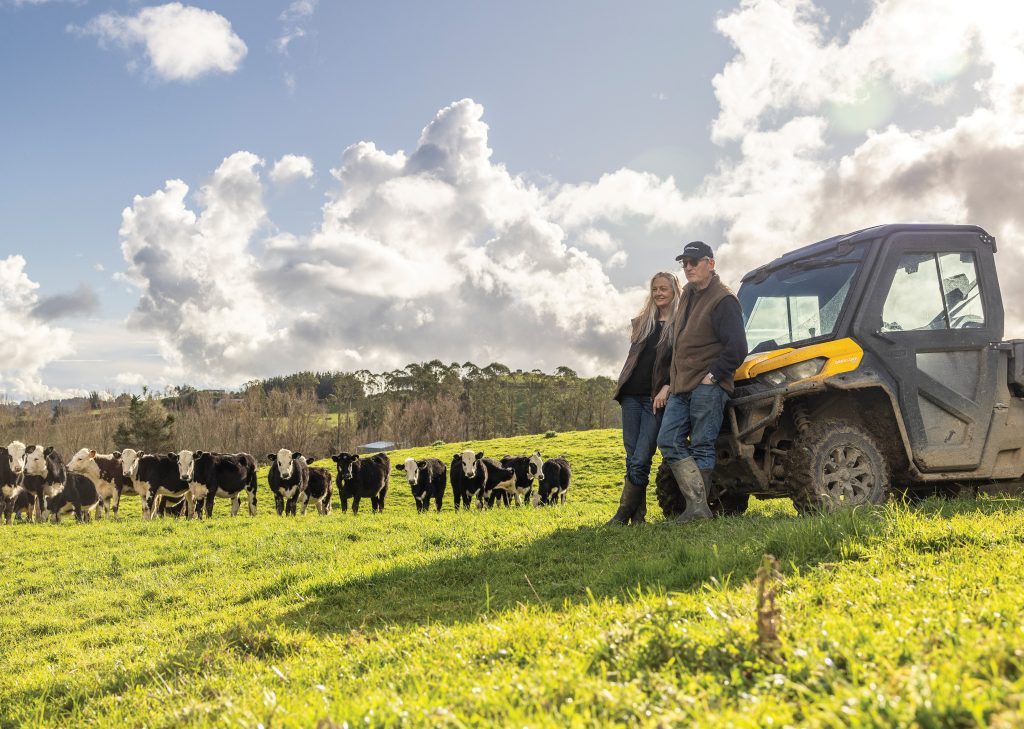
The Mannerings, who took out the Supreme Award at last year’s Ballance Farm Environment Awards for the Auckland area, bought their first sheep and beef farm at Paparimu in 1991 and converted to dairying the following year. They employed a sharemilker and kept working in their other businesses to pay the mortgage.
In 2011 Shirley-Ann inherited her father’s sheep and beef farm and two more dairy farms, which she and Rick now run as one, known as Waytemore Farms. Some of the farms share internal boundaries and in total cover 1455 hectares (1180ha effective), with the dairy platform making up about 400ha effective. A block of 28-year-old pines was harvested last year and just over 35ha will be replanted, along with a new 4.3ha planting of manuka to be a buffer between the pine blocks and Queen Elizabeth II National Trust-protected bush and swamp-forest ecosystems.
Blitzing the pests
There’s 130ha of mature indigenous trees surveyed and fenced, along with forest remnants and kahikatea stands. As well, there’s 60km of waterways, not including that in fenced forest areas, along with 35km of riparian fencing.

On one of their dairy farms, Kauri Hiwi, they’ve installed about 70 Philproof bait stations as part of the possum ground-baiting programme undertaken following a 1080 operation in 2018. A similar programme added further bait stations before a 1080 drop in September last year. With support from the Auckland Council QEII Fund in 2020 they installed 65 lockable rat bait stations at the Philproof locations on Kauri Hiwi and put in 12 NZAT 220 autotraps as a trial, which proved very successful at dispatching possums and rats. They’d established lines of 85 Philproof bait stations for possum control in most fenced native bush areas on Waytemore in 2019, but a year later commissioned a five-year pest and predator control plan for the farms which has been implemented. The aim is an integrated pest management approach that is environmentally and economically sustainable.
“We specifically wanted to avoid the bioaccumulation of chemical toxins within the environment,” Rick says.
In 2021, again with support from the Auckland Council QEIIN Fund, they bought 20 more NZAT 220s for the steeper pine plantation country and have also added 27 Flipping Timmy possum traps, a mix of 24 DoC 200s and 250s for mustelids, 100 rat bait stations and five Steve Allen Kat Traps for feral cats.
“While possums are the major issue, we also want to address apex predators such as mustelids and feral cats as well as rodents.”
Pest control for biodiversity sees them not solely focusing on one species but taking a landscape scale approach. With the Hunua Ranges Regional Park and Mangatawhiri Forest Conservation Area as neighbours to Kauri Hiwi, pests and predators can re-infest protected covenants and re-establish in uncovenanted areas.
“We’re aware that at the moment extinction is not realistic, so we aim for heavy suppression of targeted species,” Rick says.
“Trialling new hardware and looking at new technology helps us ensure we’re being both efficient and effective with our control.”
Alongside their Ballance award, the Mannerings took out the DairyNZ Sustainability and Stewardship Award, the Hill Laboratories Agri-Science Award, the Massey University Innovation Award and the Auckland Council Water Quality Enhancement Award.
